Crowns on A Broken Tooth: A Durable Solution
Crowns on a broken tooth are a popular and effective solution for restoring damaged, broken, or decayed teeth, and improving chewing function and aesthetics. By protecting teeth from external factors, enhancing durability, and extending the tooth’s lifespan, crowns on broken teeth help patients maintain oral health while achieving a beautiful and confident smile. This article will explore the key benefits of dental crowns, how to select them, and how to protect them for long-lasting results.
What Are Dental Crowns on a Broken Tooth?
A dental crown is a restoration that surrounds the tooth and covers or forms a snug cap over the remaining tooth structure above the gum line, restoring its original shape. Crowns are used when a tooth is broken or damaged, such as when it is cracked due to trauma. A crown can hold the tooth together and prevent further damage. Additionally, crowns are used in cases of tooth discoloration or to protect weak teeth.
To place a crown, a dentist must first remove some of the patient’s enamel. Then, an impression of the tooth is taken and sent to a laboratory for fabrication. While waiting for the final restoration, the patient will receive a temporary crown placed over the prepared tooth. During the second appointment, the permanent crown will be securely attached, replacing the temporary crown.
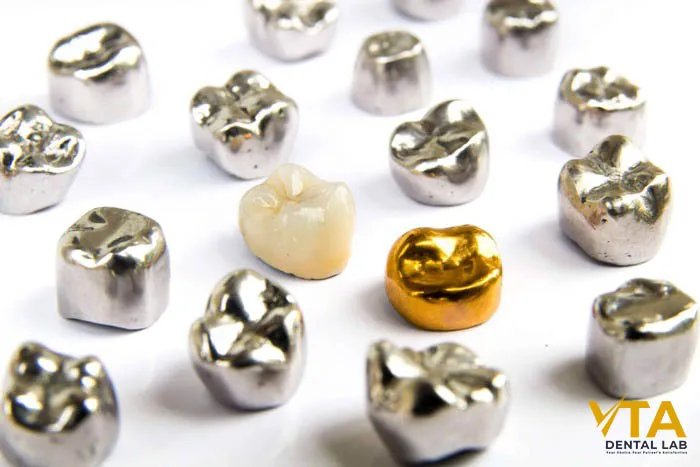
Types of Dental Crowns
Currently, there are five types of dental crowns, each with a different manufacturing process:
Metal Crowns
Metal crowns are made from alloys such as gold, palladium, nickel, or chromium. These crowns are highly durable, as metal materials rarely chip or break, and they require only minimal enamel removal. However, metal crowns are not aesthetically pleasing, making them the best choice for molars in less visible areas.
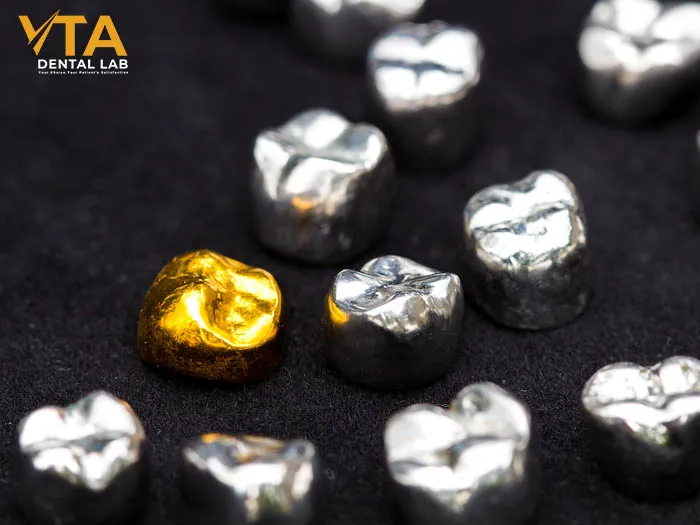
Porcelain-Fused-to-Metal (PFM) Crowns
PFM crowns combine the strength of a metal inner layer with the natural appearance of an outer porcelain layer. Dentists take a traditional or digital impression of the patient’s teeth and send it to a dental lab along with specific requirements to fabricate a crown that matches the patient’s tooth shape, color, and bite.
While PFM crowns are durable, they do have some drawbacks. Over time, the porcelain layer may chip, exposing the metal underneath, and they may gradually wear down the opposing tooth’s enamel. PFM crowns are used for both front and back teeth and have a lifespan similar to metal crowns.

Pressed Ceramic Crowns
Pressed ceramic crowns have a structure similar to PFM crowns, but instead of a metal core, they feature a ceramic core. To create the inner ceramic core, skilled technicians at a dental lab melt and press ceramic material at high temperatures, followed by layering multiple porcelain coats on the surface. Like all ceramic crowns, pressed ceramic crowns perfectly mimic the translucency of natural tooth enamel.
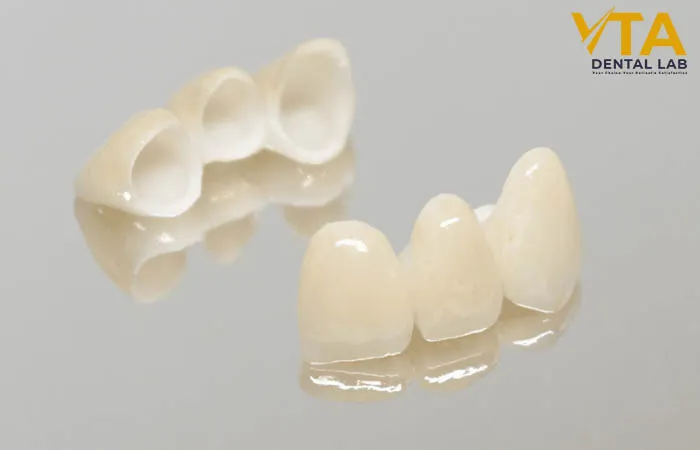
All-Ceramic or Porcelain Crowns
All ceramic or porcelain crowns are dental restorations made entirely from ceramic or porcelain materials, without any metal components. These crowns are known for their natural appearance, mimicking the translucency and color of real teeth, making them an excellent choice for front teeth restorations where aesthetics are a priority.
In monolithic ceramics, zirconia has the lowest risk of cracking or chipping under high bite forces, according to a 2016 study. With proper care, it can last up to 15 years.
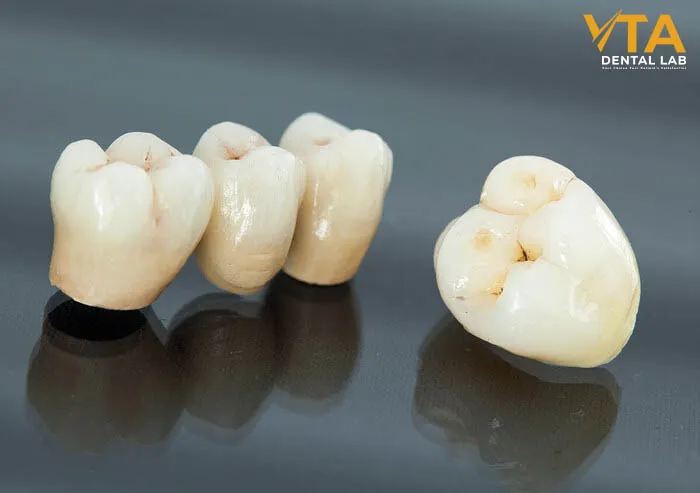
All-Resin Crowns
All-resin crowns are dental crowns made entirely of composite resin. They are often used as a more affordable option compared to metal, porcelain-fused-to-metal (PFM), or all-ceramic crowns. While they provide a decent aesthetic appearance, they are generally less durable and more prone to wear and fractures over time.
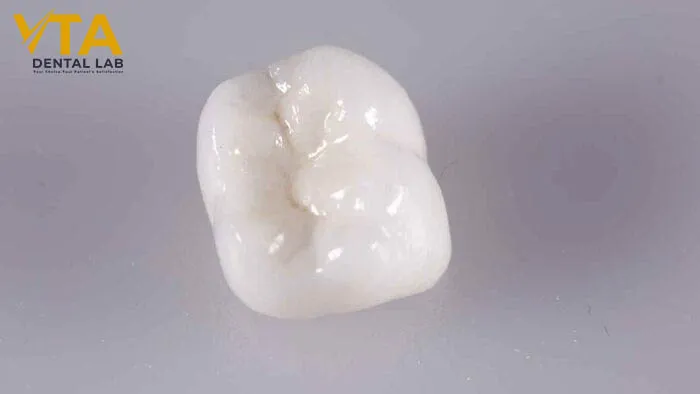
Can you get crowns on a broken tooth?
A dental crown is designed to fit snugly and securely over the remaining tooth structure. If a patient has lost more than ¾ of their tooth, you can reshape the tooth using composite resin before placing the crown. This helps create a more stable foundation for the crown.
If a patient’s tooth is broken, a crown can still be placed as long as the damage is not too severe. In such cases, composite resin can fill in any cracks before securing the crown on top.
Risks / Benefits of crowns on a broken tooth
The benefits of dental crowns
Treatment for Broken or Decayed Teeth: In cases where a patient’s teeth are damaged due to factors like teeth grinding or consuming highly acidic foods, they can become sensitive, weak, and may struggle to perform chewing functions. A dental crown helps cover and protect worn teeth, restoring their original shape and size, while also reducing tooth sensitivity.
Protecting Teeth from Wear: Tooth wear occurs when enamel is worn down due to various factors, potentially making teeth more sensitive. A crown is designed to cover the entire tooth, providing a protective layer against acids from food or friction while chewing, thereby maintaining oral health.
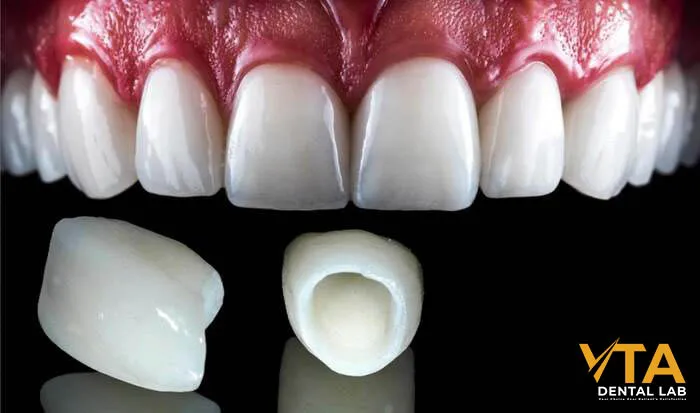
Improving Aesthetics: Aesthetic concerns are important for teeth located in visible areas. Crowns on broken teeth are designed to match the shape, color, and bite, harmonizing perfectly with the patient’s smile. Furthermore, the stability and durability of crowns offer functional chewing ability, making eating easier.
Long Lifespan: Dental crowns are highly durable and can last for many years, even a lifetime if properly cared for.
Preserving Natural Tooth Structure: Instead of extracting a broken tooth, crowns on a broken tooth help preserve the natural tooth structure. This helps maintain the integrity of the bite and avoids more invasive procedures like implant surgery.
With their ability to protect, restore function, and improve aesthetics, crowns on broken teeth are a reliable and effective solution for damaged teeth.
The Risks of Crowns on a Broken Tooth
Although dental crowns are an effective solution for restoring damaged or broken teeth, there are some risks associated with their use. Below are the risks to consider:
Removal of Natural Enamel: Tooth enamel is the outer layer of the tooth, protecting it from environmental factors such as temperature and bacteria. However, during the preparation for the crown, the dentist needs to grind away some enamel to make space for the crown. This step is necessary to ensure the crown fits properly and securely on the tooth.
Sensitivity or Discomfort: After placing a crown on a broken tooth, the tooth may experience temporary sensitivity to hot, cold, or pressure.
Infection or Decay Under the Crown: If the tooth was severely damaged before the crown was applied, there is a risk of infection or decay developing beneath the crown.
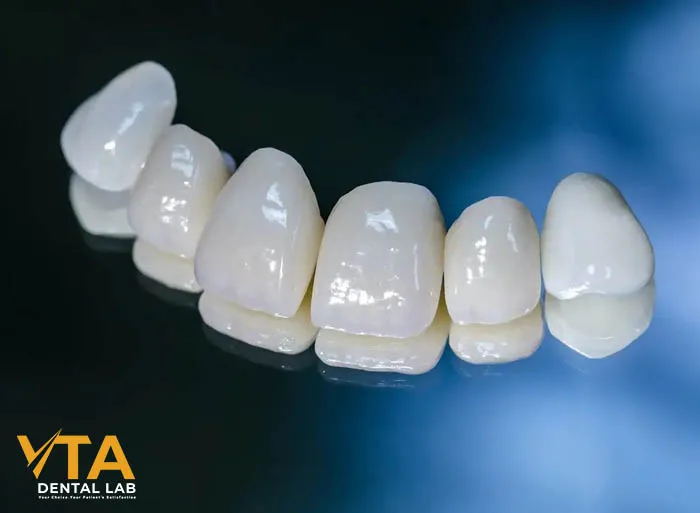
Ill-Fitting Crowns: If the crown does not fit properly in the patient’s mouth, it may cause discomfort, misalignment of the bite, or long-term gum damage.
Allergic Reactions: Some patients may be allergic to the materials used in crowns, such as metal or adhesives. This can cause discomfort and swelling, although such cases are relatively rare.
In Conclusion
Dental crowns can restore worn, damaged, or decayed teeth while enhancing aesthetics. With the ability to protect teeth from environmental factors, along with durability and longevity, crowns on a broken tooth help maintain the integrity of the tooth structure. However, it’s important to consider factors such as proper fit and post-placement care to ensure long-term effectiveness for patients.
Additionally, selecting a reputable dental laboratory is crucial in fulfilling the mission of creating beautiful smiles for your patients. VTA Dental Lab has over 20 years of experience in the field, offering high-quality crown restoration products, customized for each patient’s case, ensuring success in every treatment.
For more information about our products and special offers, contact us today!